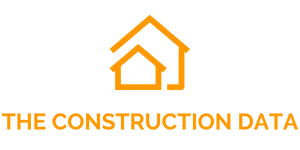
Singapore Cement Market 2025: Green Concrete & SCM Innovation
The Singapore cement industry is poised for continued expansion, driven by evolving construction demands, sustainable infrastructure goals, and regional trade dependencies. According to the latest report, “Singapore Cement Industry Market Size & Forecast by Value and Volume Across 80+ Market Segments by Cement Products, Distribution Channel, Market Share, Import – Export, End Markets – Databook Q2 2025 Update”, now available through ResearchAndMarkets.com, the market is forecasted to reach a valuation of US$394 million by 2025, reflecting an annual growth rate of 5.5%.
This trajectory builds upon the consistent momentum observed in recent years. Between 2020 and 2024, the industry posted a compound annual growth rate (CAGR) of 6%, a robust performance considering the global disruptions during that period. From 2025 to 2029, the market is expected to grow at a CAGR of 5.1%, eventually reaching a projected size of US$481 million by 2029, up from US$373.5 million in 2024.
A Cement Industry Shaped by Constraints and Opportunity
Singapore’s cement sector operates within a unique and complex landscape. Unlike many of its regional counterparts, Singapore does not produce clinker, the primary ingredient in cement production. Instead, the country relies heavily on imports from regional suppliers, particularly from Malaysia, Indonesia, and other Southeast Asian countries. This import-reliant model is largely due to land constraints, high energy costs, and strict environmental regulations that limit the feasibility of large-scale cement manufacturing facilities within the city-state.
Despite these constraints, Singapore has developed an efficient and resilient supply chain to meet its domestic demand. Cement is a vital material in the country’s ongoing urban development, including public housing, commercial real estate, industrial hubs, and infrastructure megaprojects like MRT line extensions and port redevelopments. This steady and predictable demand, largely underpinned by government-led construction and redevelopment efforts, has helped stabilize the market even amidst global supply chain volatility.
Public Infrastructure and Housing as Pillars of Demand
The demand for cement in Singapore is largely driven by public infrastructure and Housing & Development Board (HDB) projects. The government’s long-term commitment to urban development, modernization of transport networks, and industrial rejuvenation continues to be a strong driver of cement consumption. In recent years, programs such as the Tuas Port expansion, Cross Island Line, and HDB’s Green Town Programme have provided consistent and large-scale demand for concrete-based materials.
Moreover, asset maintenance and the upgrading of existing buildings and infrastructure also contribute significantly to cement consumption. As Singapore’s infrastructure ages, refurbishment and retrofitting efforts remain an important part of the construction ecosystem. These works often require high-performance cement products that meet updated sustainability and safety standards.
Sustainability and Innovation Transforming the Industry
A defining trend shaping the future of Singapore’s cement industry is the increasing focus on sustainability. The government has set ambitious environmental targets, including its Singapore Green Plan 2030, which includes decarbonization of the built environment and reducing embodied carbon in construction materials.
As a result, the cement sector is experiencing a paradigm shift. Traditional cement, which is energy-intensive and associated with high CO₂ emissions, is being reassessed in favor of greener alternatives. Companies are accelerating the development and adoption of low-clinker cements, supplementary cementitious materials (SCMs) like fly ash and slag, and carbon capture technologies.
In addition, digital transformation is becoming an integral part of the value chain. Firms are adopting digital logistics platforms, automated dispatch systems, and predictive analytics to optimize operations, reduce delivery times, and lower emissions from transportation. These technologies also enhance inventory management and improve coordination across construction timelines.
Circular economy principles are also taking root, with an emphasis on material recovery and reuse. Concrete recycling and incorporation of industrial by-products are becoming more common, further reducing the industry’s carbon footprint.
Navigating Rising Costs and Supply Chain Risks

While growth prospects are encouraging, Singapore’s cement industry is not without challenges. Rising energy costs, volatile shipping rates, and carbon pricing policies are increasing the cost of cement production and transportation. These pressures are particularly acute for an import-dependent country like Singapore, where even minor disruptions in regional supply chains can have significant local impacts.
To mitigate these risks, many companies are exploring diversified procurement strategies, securing multi-source supply agreements, and investing in strategic storage solutions to ensure a buffer against international shocks. Additionally, alignment with regional decarbonization policies is becoming critical, especially as ASEAN countries implement their own carbon border regulations and green procurement frameworks.
Urban logistics is another pressure point. As Singapore densifies, transporting cement through its constrained road networks—often to construction sites located in built-up areas—becomes more challenging. Efficient scheduling, micro-distribution centers, and coordination with site managers are essential to minimize congestion and avoid costly delays.
Towards Net-Zero and Beyond: The Road Ahead
Singapore’s net-zero target by 2050 will have a profound impact on how the cement industry evolves. Producers will need to balance three often-competing priorities: sustainability, profitability, and operational resilience.
Companies that invest early in decarbonized cement products, transparency tools like carbon labeling, and climate disclosure frameworks are likely to gain a competitive edge. Regulatory compliance, especially around embodied carbon accounting, will be non-negotiable as both public and private developers increasingly adopt Green Mark and LEED certifications.
Furthermore, the sector will likely see deeper integration with prefabricated and modular construction techniques, which rely on precise and high-quality concrete products delivered on just-in-time schedules. This approach aligns with Singapore’s Productivity and Innovation initiatives, reducing waste and accelerating build times.
Firms that focus on low-clinker innovation, digital tracking of emissions, and recycled content integration will be better positioned to attract institutional support, align with public policy, and unlock premium markets that value sustainability credentials.
A Model for Urban Resilience in Construction
Singapore’s cement industry, though relatively small on a global scale, presents a compelling case study for how cities can balance growth with environmental stewardship. Its evolution reflects the broader transformation of construction industries in developed urban centers, where carbon constraints, land scarcity, and regulatory pressure demand innovation and cross-border collaboration.
With proactive regulation, forward-thinking corporate strategies, and regional cooperation, Singapore’s cement sector is not only keeping pace with global sustainability goals but is also setting the stage for green construction practices in Asia.
As the city-state continues to build upward and outward, from its skyline to its underground transport corridors, the cement industry will remain a cornerstone of Singapore’s future—one that must increasingly support both economic progress and environmental responsibility.




